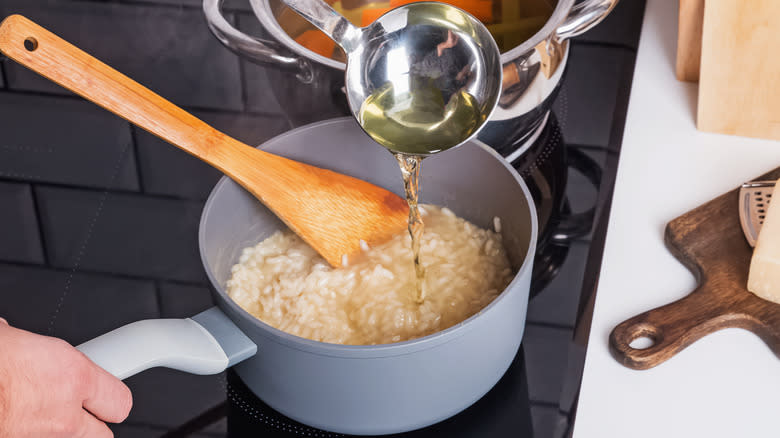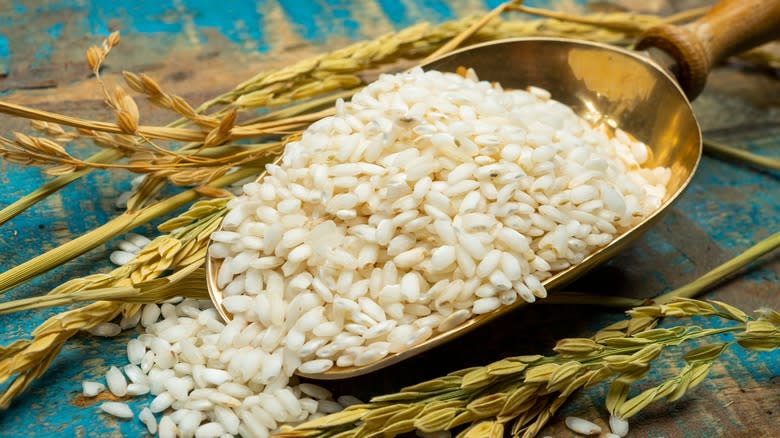The Prep Mistake To Avoid For Way Faster Risotto

While arborio rice is considered a key component of the perfect risotto (a dish which resides in the pantheon of classic Italian recipes), liquid plays an equally crucial role in its preparation. Although some cooks favor water or wine, many opt for broth as a way to enrich the dish. But regardless of whether your broth features chicken or vegetables, using the right technique when adding it to the rice is a must to ensure the desired outcome. For instance, the broth is not intended to be added all at once, but incrementally stirred in with the other ingredients. The temperature of the broth also matters quite a bit, especially if you're trying to shave some time off the cooking process.
In this case, be sure to warm up the broth prior to adding it to the rice. Using warm broth expedites the cooking process, which means you may be able to complete the dish in a relatively brisk 20 minutes. You can use a stove top burner to heat the broth, or just pop it into the microwave for an even faster, more convenient process. Along with decreasing the time it takes for the dish to cook, warm broth also offers another pivotal benefit.
Read more: 5 Rice Brands To Buy, And 5 To Avoid
Hot Broth Improves The Quality Of Your Risotto

While many people think of cooking as an art form, it's important to remember that there's also a fair bit of science involved. For instance, combining ingredients that are two separate temperatures can cause some unwanted effects and prevent everything from cooking evenly. Along with the impact it has on cooking times, integrating warm broth into a warm pan can also improve the texture and doneness of the arborio rice.
If the broth is cold when it's added it will bring down the temperature of some of the rice in the pan. This rice will then cook more slowly, which means that it may end up being underdone. On the other hand, continuing to cook the rice may result in other portions being overdone, which will diminish the quality of the entire dish. With warmed up broth, temperature differences will be far less likely, which means the rice will cook evenly and reach its desired texture at roughly the same time.
Other Ways To Ensure The Best Possible Risotto

It may be tempting to choose other types of rice for risotto if you find that you don't have arborio on hand at home. However, certain varieties of rice are preferred when cooking risotto, particularly those that are short-grained and quite starchy. These traits are essential when it comes to rice selection, as they help the risotto achieve the desired texture. Carnaroli rice also works well in the recipe but bear in mind that this variety can extend cooking times a bit since it has more starch as compared to arborio rice.
Speaking of starch, never rinse your rice when making risotto. Rinsing rice is commonplace with other preparations, as removing residual starch prevents individual grains from clumping together. Conversely, starchiness is a key factor in the sought-after risotto texture, which should be smooth and creamy. With these simple tips, you can make risotto like a true professional.
Read the original article on Daily Meal.

